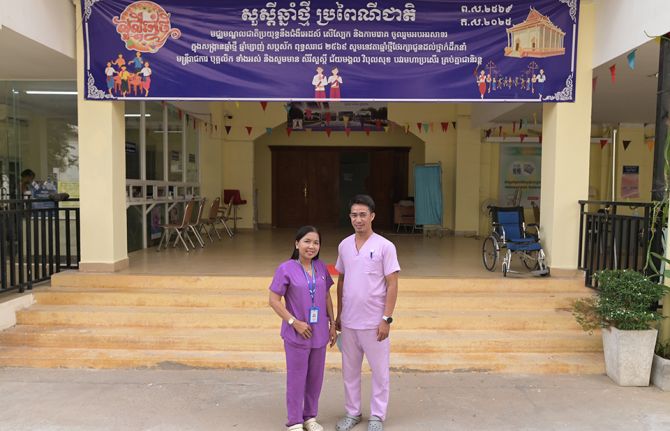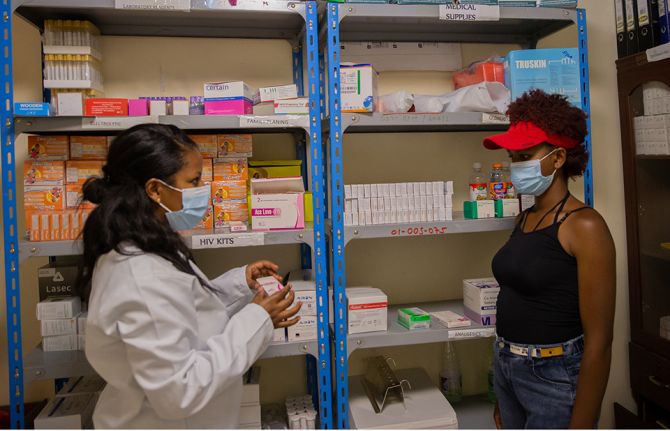
Feature Story
Getting to zero AIDS-related deaths: TRIPS and the potential impact of free trade agreements
01 June 2012
01 June 2012 01 June 2012
At the UN General Assembly High Level Meeting on AIDS in New York in June 2011, governments from around the world made a bold pledge to get all people eligible on treatment by 2015.
Credit: UNAIDS/D.Walker
For long-time HIV activist and Coordinator of the Asia Pacific Network of People Living with HIV (APN+) Shiba Phurailatpam, the importance of sustained access to affordable AIDS medicines is more than a trade, legal or logistical issue: “It is literally a matter of life and death for people living with HIV,” Phurailatpam says. “More than 60% of people in need of HIV treatment in Asia-Pacific still don’t have it. Across the world, millions of people need access to HIV treatment, today, to keep them alive.
Antiretroviral drugs have changed the way in which HIV is viewed—from a death sentence to a chronic illness. That achievement was propelled by a surge in donor funding and by the drastic reduction of the cost of first-line antiretroviral regimens from around US$ 10 000 to under US$ 100 per person per year over the past decade, due in part to the increased availability of low-cost generic medicines.
Over the past decade, more than 6.6 million people have received antiretroviral therapy in developing countries across the world. At the UN General Assembly High Level Meeting on AIDS in New York in June 2011, governments from around the world made a bold pledge to get all people eligible—an additional nine million people living with HIV—on treatment by 2015.
But at this time of opportunity, the sustainable future of HIV treatment programmes remains of serious concern. Countries are facing mounting challenges to produce or procure affordable HIV treatment, including cutbacks in AIDS funding and a proliferation of increasingly restrictive intellectual property measures in free trade agreements.
Making antiretroviral affordable: TRIPS flexibilities
Intellectual property and trade flexibilities within the intellectual property rights system were set out in the World Trade Organization Agreement on Trade-Related Aspects of Intellectual Property Rights (TRIPS). Later on, the Doha Declaration on the TRIPS agreement and public health reaffirmed those flexibilities by providing opportunities for low-and middle-income countries to expand access to low-cost, assured quality pharmaceutical products.
Evidence from countries across the world including Brazil, Ecuador, India, Indonesia, Malaysia, and Thailand shows that the use of TRIPS flexibilities can help substantially lower the costs of HIV treatment. India, for example, has emerged as the ‘pharmacy of the developing world’, producing more than 85% of all first generation antiretroviral drugs used to treat people living with HIV in low- and middle-income countries.
Nevertheless most countries have yet to use, to the fullest extent possible, the flexibilities available in the TRIPS Agreement to sustain affordable treatment. And the potential impact of a number of current or planned free trade agreement negotiations taking place across the world—particularly affecting countries in the Asia and the Pacific region can hinder countries rights to implement such flexibilities.
Mounting challenges: potential impact of free trade agreements
“In recent years, we see increasing pressure for developing countries to adopt clauses on intellectual property aimed at limiting the use of TRIPS flexibilities that have so far allowed countries to restrict patenting of life-saving medicines and produce or import them in generic forms,” says Sarah Zaidi of the International Treatment Preparedness Coalition (ITPC).
Known as ‘TRIPS-plus provisions’, these measures require countries to adapt their laws to provide intellectual property protection and enforcement far in excess of what they agreed to under the TRIPS agreement.
In recent years, we see increasing pressure for developing countries to adopt clauses on intellectual property aimed at limiting the use of TRIPS flexibilities that have so far allowed countries to restrict patenting of life-saving medicines and produce or import them in generic forms
Sarah Zaidi of the International Treatment Preparedness Coalition
The primary vehicles for adopting these TRIPS-plus measures are free trade agreements. The European Union – India agreement, under negotiation since 2007, is among the most keenly monitored of these deals, given the large share of generic medicines being produced in India. Other countries in Asia and the Pacific are also undergoing negotiations for, or planning to negotiate, agreements with the EU, the European Free Trade Association (EFTA) or the United States of America (through the Trans-Pacific Partnership Agreement). For all such agreements, it is hoped they would contain pro-development provisions that would enable, not impede, access to treatment. Otherwise, activists warn, drug prices could escalate dramatically, making it impossible for low- and middle-income countries to sustain their treatment supplies.
A new UNAIDS/UNDP joint issues brief highlights the potential impacts of free trade agreements on public health. The brief concludes that “to retain the benefits of TRIPS flexibilities, countries at a minimum should avoid entering into free trade agreements that contain obligations that can impact on pharmaceutical price or availability.” It further recommends that where such commitments may have already been agreed, efforts should be made to mitigate the negative impact on access to treatment by using remaining public health-related flexibilities available.
In July 2011 at a meeting with UNAIDS Executive Director Michel Sidibé, India’s Commerce Minister Anand Sharma reaffirmed the Government of India’s commitment to ensure that quality generic medicines are seamlessly available, and to make them available to all countries. “India will also use the flexibilities allowed under TRIPS, including the use of compulsory licensing, to ensure that people living with HIV have access to all life-saving medicines,” he said.
Asia: countries chart new courses on to increase access to AIDS treatment
From 29-31 May, UNAIDS and UNDP Asia Pacific regional offices and APN+ brought to Bangkok representatives from government agencies, the UN, civil society and academia from nine countries in the region (Cambodia, China, India, Indonesia, Malaysia, Myanmar, the Philippines, Thailand and Viet Nam) to discuss the impact that intellectual property and free trade agreements can have on access to antiretroviral therapy.
We now have a unique chance to reduce both new HIV cases and AIDS deaths by offering timely ART for all in need. We can’t let barriers to affordable drugs come in the way of this!
Shiba Phurailatpam from the Asia Pacific Network of People Living with HIV
Participants at the consultation also took concrete steps towards accelerating action within their countries. Each country delegation identified key areas for joint action, collaboration and support and developed a focused plan to speed up joint national action and ensure greatest impact.
In the Asia-Pacific region, 1.5 million people need access to HIV treatment. Underlining the importance of renewed drive and momentum towards reaching the ambitious regional and global goals, UNAIDS Regional Director Steven Kraus said “Countries need to use all the means at their disposal, including the TRIPS flexibilities, to increase treatment levels and to reach people most in need. There are very positive movements in the region towards expanding access to treatment and by working together, across sectors, the greatest results are possible.”
“Countries in this region should approach the TRIPS Agreement from a pro-development perspective,” said Clifton Cortez, Regional Practice Leader on HIV, Health and Development, UNDP Asia-Pacific Regional Centre. “This meeting recognizes the importance of connecting key national and regional players together to pursue common goals,” he added.
Shiba Phurailatpam from the Asia Pacific Network of People Living with HIV agrees: “We now have a unique chance to reduce both new HIV cases and AIDS deaths by offering timely ART for all in need. We can’t let barriers to affordable drugs come in the way of this!”



